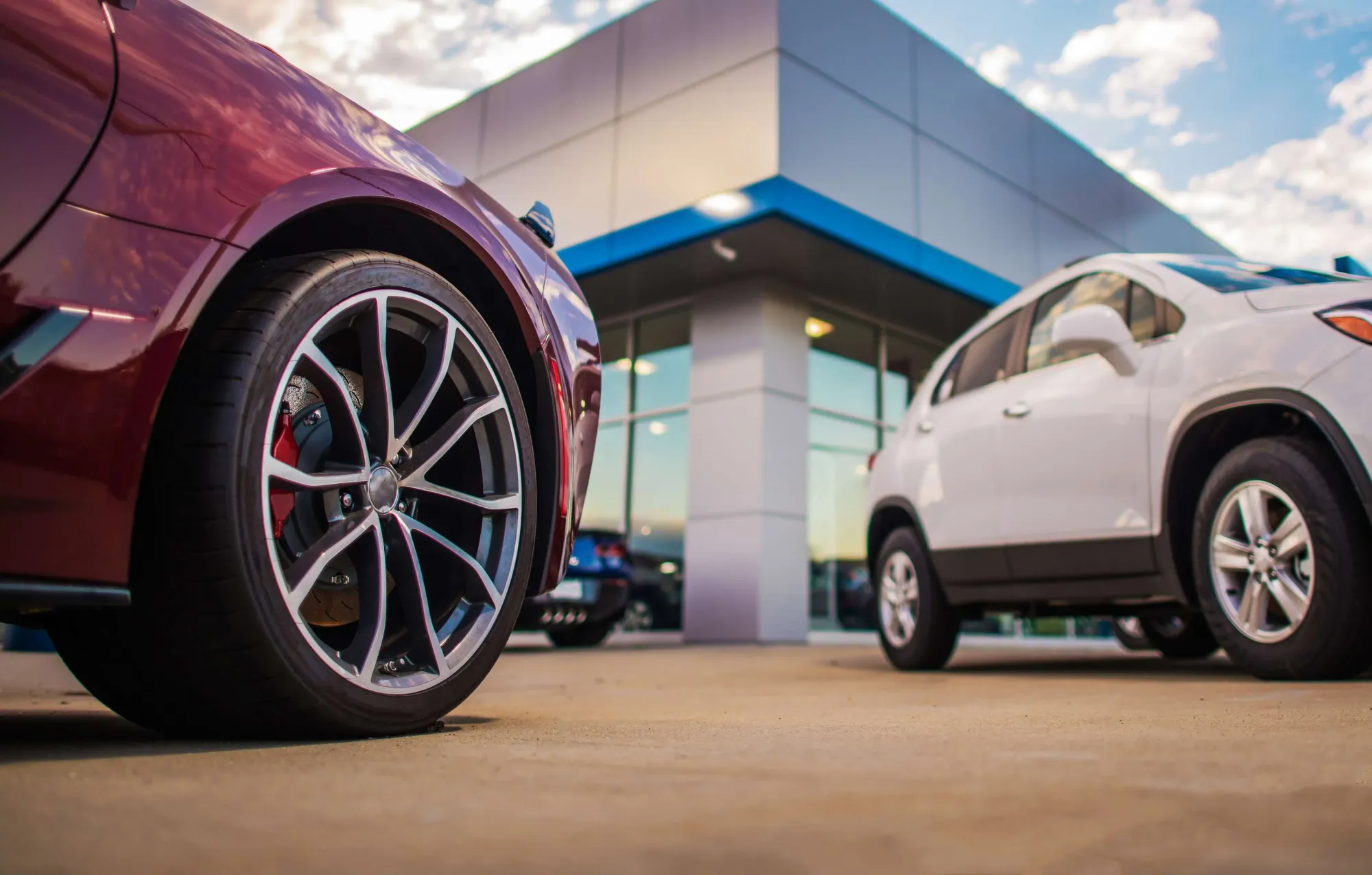Starting a second-hand car dealership can be a very lucrative business opportunity, especially if approached strategically and professionally.
The key to success in this sector lies in meticulous planning, sales strategy and understanding the market.
This article will guide you step by step through the process of setting up your own second-hand car dealership business.
Preliminary considerations
Before opening a second-hand car dealership, it is essential to conduct thorough research and take several key factors into account.
Here are some of the most important aspects you should consider before taking the next step.
Market research
Market research will help you get to know your competition and identify niche opportunities.
Analyse what types of vehicles sell best in your area (e.g., compact cars, SUVs, luxury vehicles, etc.), as well as the demand for different brands.
Examine the pricing strategies and additional services offered by other dealerships, even if they are not in your area.
Trends and direct competition
Assess how trends in second-hand vehicle purchases are evolving.
In recent years, there has been increased interest in more environmentally friendly vehicles (electric and hybrid cars) and older models.
In addition, it is crucial to know your direct competitors, their prices, vehicle models and the additional services they offer, such as warranties or financing.
Dealership location
The location of your dealership is key to attracting customers.
Ensure you are in an area with good traffic or close to residential areas.
Visibility is essential, as buyers tend to explore several options before making a decision.
Starting a used car dealership: first steps

Once you have a clear picture of the market and the viability of your business, it's time to start setting up your dealership.
Here are the essential first steps:
Business plan
A well-structured business plan is the foundation of any business.
Define the purpose of your dealership, the types of vehicles you will offer, your target audience, costs, and projected revenue.
The plan should include:
- Market and competition analysis: Research the demand for second-hand vehicles in your area and average vehicle prices.
- Marketing strategy: Establish how you will attract customers, what channels you will use (online and offline) and how you will differentiate your dealership from others.
- Financial projections: Include a detailed analysis of start-up costs, financing, profit margins, and operating expenses.
Create your brand
Branding is one of the most important elements for your dealership. Good branding will help you stand out and convey confidence to customers.
Think about the name of your dealership, the logo, the colour palette and the message you want to communicate.
It is also important to define a clear value proposition, such as ‘specialists in second-hand electric cars’ or ‘we don't sell motorhomes, we sell homes on wheels’.
Specialize
Although not essential, specializing in a type of vehicle helps you stand out from the competition and become a benchmark in the area.
You can focus on specific brands, electric vehicles, luxury cars, sports cars, imported caravans, 4x4s, etc.
Specialization will allow you to establish a solid reputation in that niche.
Secure financing
Start-up capital is one of the main obstacles to opening a second-hand dealership.
You can seek financing through:
- Bank loans: It is common for dealerships to take out loans to purchase inventory and cover initial expenses.
- Investors: If you do not have sufficient capital of your own, seeking investors interested in your idea may be an option.
- Vehicle leasing: Some companies offer leasing agreements, which allow you to avoid having to purchase all the vehicles at once.
Take out the necessary insurance
In this type of business, where the product is high value, taking out the appropriate insurance is absolutely necessary.
In addition, if you have employees and a public premises, make sure you have:
- Property insurance
- Civil liability insurance
- Employee civil liability insurance.
- Vehicle insurance, including test drives and commercial coverage
There are insurance companies that already offer this type of service for dealerships.
It is advisable to do some market research to find out what coverage each one offers, at what price and under what conditions.
Create online and offline sales strategies
Second-hand vehicle sales should combine both online and offline strategies to reach as many customers as possible.
Online
Nowadays, having an online presence is almost essential.
Use your website, social media and advertising platforms to showcase your vehicles.
High-quality photos, detailed descriptions, and transparent pricing are key.
You can also implement live chat options or online appointments to facilitate communication.
Consider using popular used car sales platforms in your region.
Offline
Organize events, such as open days or special promotions.
In addition, ensure you have a trained sales team that can offer personalized advice to customers.
Prepare a document with the issues that most deter potential customers from buying and develop answers that resolve their doubts and bring them closer to making a purchase.
For example, if price is an issue, avoid reducing it and opt to offer a financing plan that makes it impossible for the potential customer to say no.
Website, stock management and accounting
Having a good management system is essential for keeping your inventory organized, tracking sales and controlling your finances.
An inventory management system will help you know how many vehicles you have available, which ones are the most popular and when you need to restock.
In addition, it is important to use accounting software to efficiently manage income, taxes, and financial transactions. You can also consider hiring a specialized company to provide this service.
Create partnerships
Establishing strategic partnerships is an excellent way to expand your network and improve your offering.
Consider partnering with vehicle repair and cleaning workshops, insurance companies, banks, financial groups that offer financing options, or other companies that offer complementary products, such as the Certificate of Conformity (COC).
This certificate is essential for registering vehicles in Europe, as well as for importing and exporting them.
Not only will this attract more customers, but it will also allow you to offer additional services, such as maintenance or insurance, which could increase your revenue.
Follow up with your customers
After-sales follow-up is essential to ensure customer satisfaction and encourage future referrals.
You can implement a follow-up system to contact your customers after their purchase, offering them maintenance or updates on new vehicles available.
Good after-sales service not only builds loyalty, but also helps generate referrals, which is crucial in the used car business.
For example, you could partner with a cleaning company to offer a complete vehicle cleaning service, with the possibility of discounts, offers, or free washes for every X number of washes.

Frequently Asked Questions
Cost of opening a used car dealership
The initial cost of opening a used car dealership depends on several factors such as location, inventory, and marketing expenses.
Approximately, costs can range from 50,000 to 200,000 euros, depending on the size of the dealership, the type of vehicles you sell, and the services you offer.
Don't forget to include the costs of licences, insurance, advertising, and staff.
How much does a used car dealership earn?
The profit margin of a used car dealership depends on various factors, such as the type of vehicles you sell, sales volume, and operating costs.
In general, a well-managed dealership can achieve a profit margin of between 5% and 20% per vehicle.
If you sell high-end vehicles or offer additional services such as financing or extended warranties, your margins could be higher.
What warranty should a used car dealership offer?
In Europe, used car dealerships are required by law to offer a minimum warranty of one year or 2,000 kilometres (whichever comes first) in most cases.
However, many dealerships choose to offer extended warranties of up to 2 or 3 years to attract more customers.
Conclusions
Opening a used car dealership involves thorough planning and strategic execution on several fronts.
From conducting adequate market research to identify trends and competition, to developing a solid business plan that considers costs, pricing, and marketing.
It is essential to create a strong brand, specialize in a niche, and obtain financing to secure the necessary capital.
Both online and offline presence is key to attracting customers, and it is important to comply with legal requirements and have an efficient stock management and accounting system in place.
In addition, strategic alliances with workshops, insurance companies, or financial institutions can boost your business.
Finally, good after-sales follow-up will be crucial to building customer loyalty and encouraging recommendations.
With an organized and well-planned approach, your dealership has the potential to grow and be profitable.
